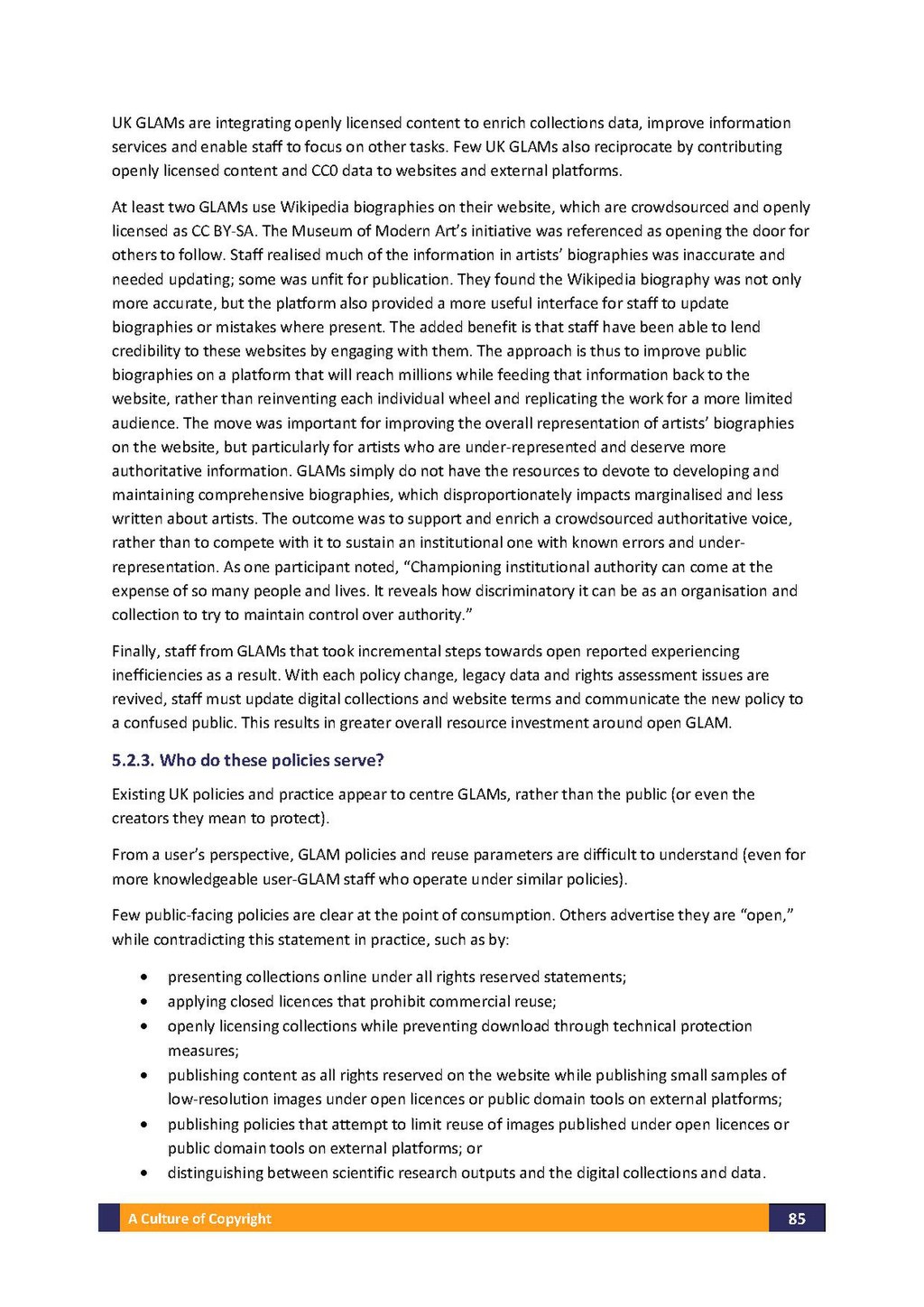UK GLAMS are integrating openly licensed content to enrich collections data, improve information services and enable staff to focus on other tasks. Few UK GLAMS also reciprocate by contributing openly licensed content and CC0 data to websites and external platforms.
At least two GLAMS use Wikipedia biographies on their website, which are crowdsourced and openly licensed as CC BY-SA. The Museum of Modern Art's initiative was referenced as opening the door for others to follow. Staff realised much of the information in artists' biographies was inaccurate and needed updating; some was unfit for publication. They found the Wikipedia biography was not only more accurate, but the platform also provided a more useful interface for staff to update biographies or mistakes where present. The added benefit is that staff have been able to lend credibility to these websites by engaging with them. The approach is thus to improve public biographies on a platform that will reach millions while feeding that information back to the website, rather than reinventing each individual wheel and replicating the work for a more limited audience. The move was important for improving the overall representation of artists' biographies on the website, but particularly for artists who are under-represented and deserve more authoritative information. GLAMS simply do not have the resources to devote to developing and maintaining comprehensive biographies, which disproportionately impacts marginalised and less written about artists. The outcome was to support and enrich a crowdsourced authoritative voice, rather than to compete with it to sustain an institutional one with known errors and under-representation. As one participant noted, "Championing institutional authority can come at the expense of so many people and lives. It reveals how discriminatory it can be as an organisation and collection to try to maintain control over authority."
Finally, staff from GLAMS that took incremental steps towards open reported experiencing inefficiencies as a result. With each policy change, legacy data and rights assessment issues are revived, staff must update digital collections and website terms and communicate the new policy to a confused public. This results in greater overall resource investment around open GLAM.
5.2.3. Who do these policies serve?
Existing UK policies and practice appear to centre GLAMS, rather than the public (or even the creators they mean to protect).
From a user's perspective, GLAM policies and reuse parameters are difficult to understand (even for more knowledgeable user-GLAM staff who operate under similar policies).
Few public-facing policies are clear at the point of consumption. Others advertise they are "open," while contradicting this statement in practice, such as by:
- presenting collections online under all rights reserved statements;
- applying closed licences that prohibit commercial reuse;
- openly licensing collections while preventing download through technical protection measures;
- publishing content as all rights reserved on the website while publishing small samples of low-resolution images under open licences or public domain tools on external platforms;
- publishing policies that attempt to limit reuse of images published under open licences or public domain tools on external platforms; or
- distinguishing between scientific research outputs and the digital collections and data.
